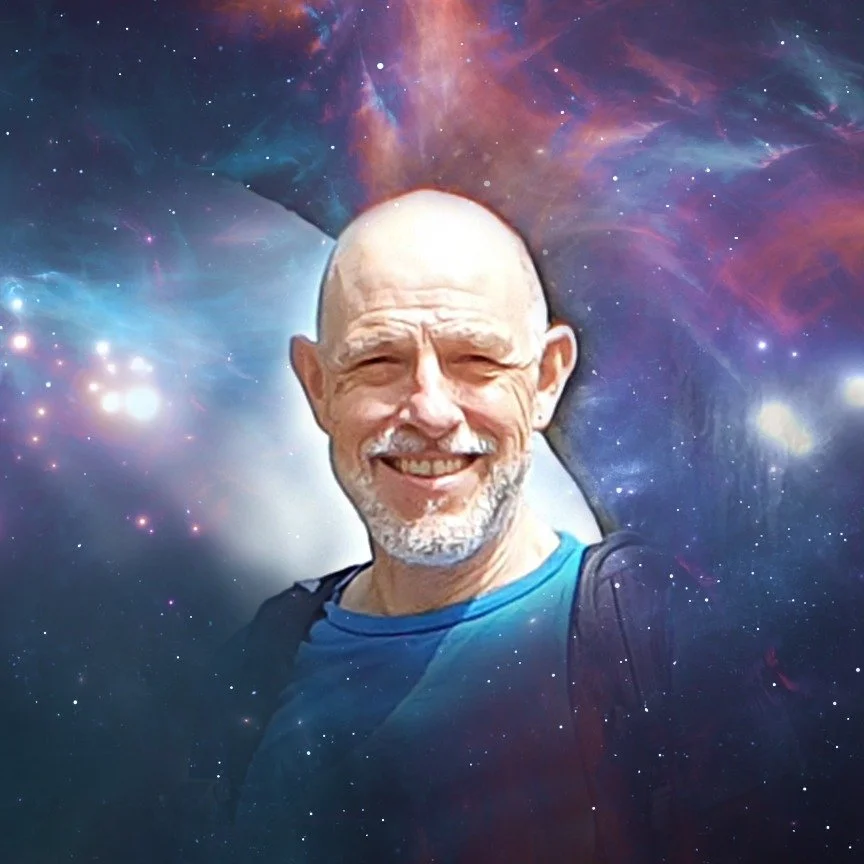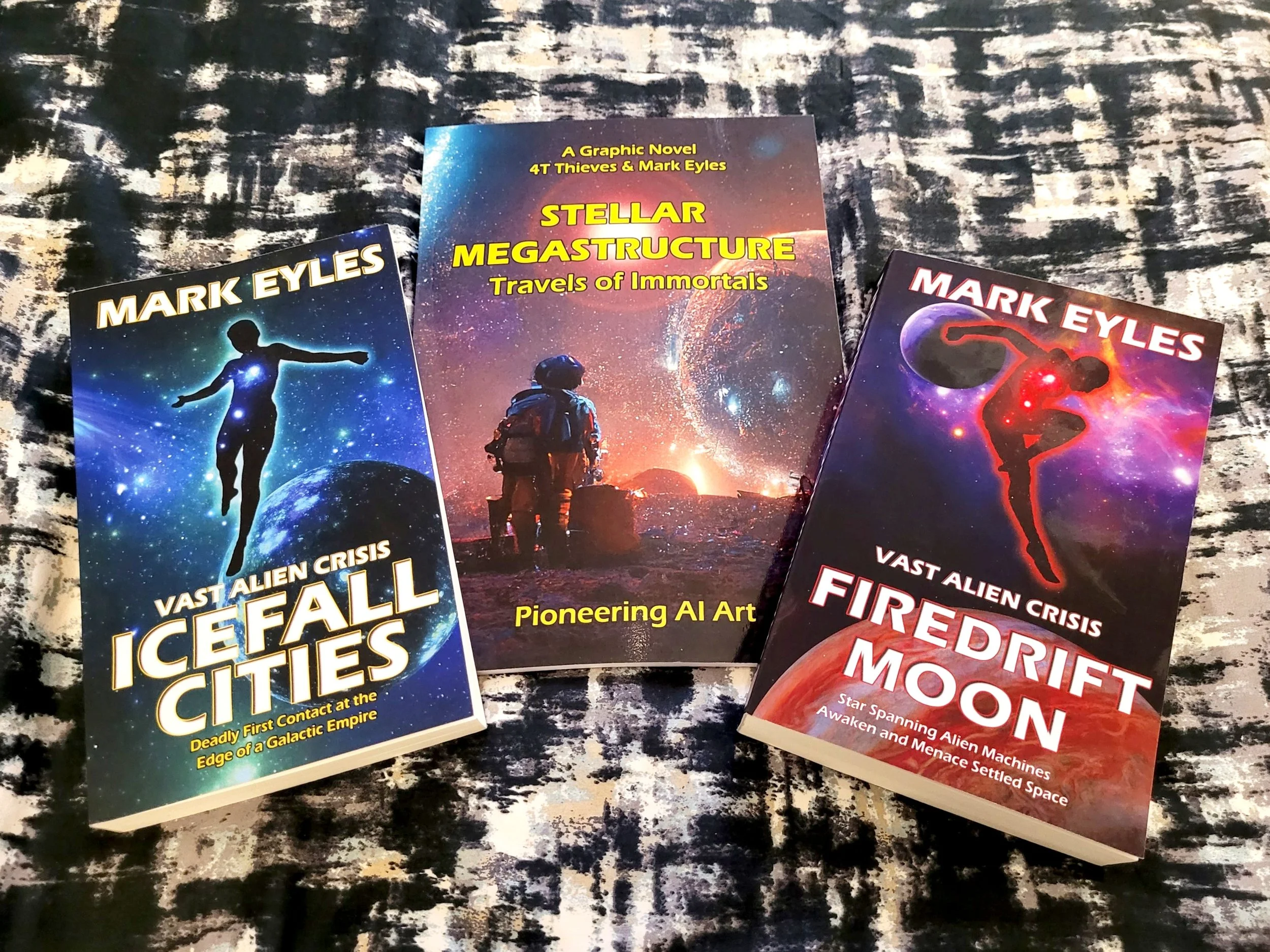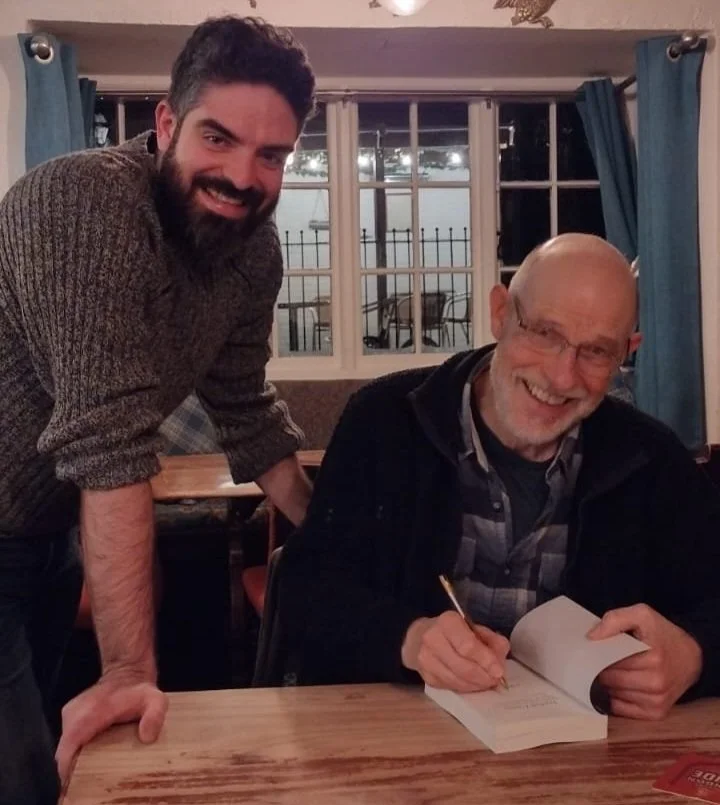Mark Eyles Interview
My most prolific friend
Reading time: 9 min
Intro
Four years ago, I joined the Hampshire Writing Society and met tons of interesting people and aspiring authors, and even made a few friends. One of them, Mark Eyles, in the same time it took me to write a novel and a half, self-published a duology of novels and a graphic novel. We meet every month to talk about all-things-writing, and when his work became available in paperback, I decided it was time to ask him some questions.
He is an amazingly creative person, and a conversation with him never fails to inspire me. Please enjoy my first interview with him!
P.S. If you want to buy one of his books, please click the button below.
Can you introduce yourself and your books?
I’m an ex-games industry veteran and ex-academic who now has time to concentrate on writing books. I have managed to incorporate creative writing into the jobs I’ve had, whether working for companies, running companies or earning my living as a freelancer. I started out in the games industry in 1981, when computer games were a new thing. As one of the industry’s pioneers in the UK, I promoted the idea of enriching even the simplest arcade games with stories. The idea was that the player was not just moving rudimentary graphics around the screen, but they were part of exciting worlds and narratives described in booklets, cover blurb or even for one project (4D Time Gate from Quicksilva) an accompanying audio production.
As gaming platforms became more sophisticated, I worked on game designs that incorporated story into the games. Often I was designing games based on movies and other intellectual properties; Aliens, Back to the Future, The Mummy, Asterix, The Lawnmower Man, for example. I also worked on original pitches, though many of these never got turned into games.
While freelancing as a game designer in the 1990s, I scripted comic strips for the British comics 2000AD and Sonic the Comic. My most successful strips were Wire Heads (2000AD) and Zonerunner (Sonic the Comic).
In 2003 I left the games industry and became an academic, setting up and running games courses at the University of Portsmouth. In my research I investigated aspects of storytelling in games. I researched ways in which games could progress ambiently in the background of peoples’ lives.
However, I still wanted to write books.
When I retired from academia in 2019, I finally had more time for my own writing. I had tried fitting writing books round my work previously, but with limited success. In the late 1980s I wrote the first drafts of two books that, in retrospect, were unpublishable! After that, I always seemed too busy with work, family and life-stuff to tackle writing a book.
Since 2019, I have been able to devote enough time to complete two novels and a graphic novel. The novels are a science fiction duology, called the Vast Alien Crisis. Icefall Cities and Firedrift Moon tell the story of Checkani and her encounter with an alien entity, Rippledarken, from another universe. They are classic space opera, full of advanced technologies, space battles, dangerous robots and alien worlds.
The graphic novel, Stellar Megastructure, was a collaboration with a former academic colleague (his pen name is 4T Thieves). He produced the graphics, and I wrote the story and laid out the pages. This came together comparatively quickly towards the end of 2022.
I am now writing a fantasy novel and have started work on another graphic novel.
How did you decide you wanted to become an author?
I was always interested in storytelling, always loved reading and wanted to write. I did not consider it as a career possibility when I was young, so tried to incorporate it into my work. When I was 30 in 1986, I finally decided I wanted to be an author. However, I was still having fun working in the games industry and did not feel confident enough to take the financial risk of trying to make a living from writing books. Also, I could get creative satisfaction from designing video games.
I think the skills I have developed over my working life are important in being able to write books that are comparable to the literature I love to read. I am not sure that I had the requisite skills when I was younger, though I had the enthusiasm. I am not interested in writing books that are not reasonably professional.
You are extremely prolific. Can you talk a little bit about your process?
Although it may appear that I’m prolific, I’m not really. I just happened to have released my first two novels and a graphic novel close together. Icefall Cities took me two years to complete, Firedrift Moon took a year and a half to finish. Those times also included extended periods after writing the first drafts, when I set the books aside before returning to edit them. While I set aside Icefall Cities, I wrote the first draft of Firedrift Moon. Then returned to Icefall Cities and started editing.
I took a ‘discovery writing’ or ‘seat of the pants’ approach to producing the two Vast Alien Crisis books. I only had a vague idea of the plot and characters when I started writing and just kept on writing until I reached the end! With both these books, I didn’t know that I had reached the end until I wrote it. As I wrote, there seemed to be an inevitability to the plot progression. Each section necessarily had to lead to the next. The new scenes grew out of previous sections. The characters and situations drove the plot forward.
I tried writing at different times of day and finally settled on writing in the afternoon. I think the single most important factor in finishing the books was persistence. Making sure that I wrote every weekday. A writing session can involve solid writing or might be taken up with research or world building. As long as whatever I’m doing contributes to completing the book, I go along with it.
Early on when working on Icefall Cities I set a goal of 1,000 words for each writing session. Sometimes I would go over this, other times I would not manage it. Whenever I missed the goal, I felt disheartened, which was not helpful. I was still progressing and setting an arbitrary target was not encouraging. I removed the stress by halving the goal to 500 words and not beating myself up when I missed this. Enjoying writing my books is important. That doesn’t mean that sometimes writing doesn’t feel like hard work, but the overall experience is pleasurable. Bringing something new into the world.
I’m taking a more structured approach to my new fantasy novel, plotting it in advance. I’m not going into lots of detail, but I’m creating a bulleted list of events that outline the plot.
What’s the difference between writing a novel and a graphic novel?
I’m wholly responsible for the novels. If they don’t work, then that’s entirely down to me. The graphic novel was a collaboration with ambient artist 4T Thieves. When I have previously worked on comics, I have written a script that was then given to an artist who created the artwork. The completed artwork and script was then given to a letterer who put them together.
Stellar Megastructure was different. 4T Thieves messaged me and sent some images he had created using AI tools (art derived from written descriptions). He wondered if he might produce some pictures based on my books. I suggested working together on a graphic novel. We then evolved a collaborative process where I built a story around images he was producing. Sometimes I’d tell him the sort of picture I wanted, other times I would incorporate images he had produced while he experimented with the graphic generation software. As well as writing the story, I used a production application (Comic Life 3) to layout and letter the graphic novel.
The whole process for creating the 63-page Stellar Megastructure graphic novel took two months. This is astonishingly fast for two people to construct a graphic novel. Especially as we had to work out the development pipeline, from conception to published, from scratch. At the time of making Stellar Megastructure, using AI art for graphic novels was new. We were pioneering this use of AI, as at the time of publication, there were only a handful of existing AI artworked graphic novels.
Writing the first novel, Icefall Cities, was a solitary process. Writing into the dark without really knowing whether I would end up with something publishable. I got some early feedback from a professional writer, Andy Remic, who encouraged me to keep going. This was confidence building and helped me have faith in what I was doing. Without this, the process would have been much scarier! I would have kept on going but finding someone independent (not family or friends) to get feedback from was reassuring.
The time taken to write a novel is significant. I am hoping to complete my fantasy book in a year; ready for release at the end of 2023. Though I won’t be surprised if it runs over into 2024.
Creating a graphic novel using the methods I’ve outlined here is like a sprint. Writing a novel is a marathon.
Any suggestion for aspiring authors out there?
Writing regularly, even if it’s not much, is vital. Keeping on writing until you reach the end is essential. There is no mystery to writing a book, you have to put in the work and keep going until it is finished.
If you have a mental block about where the story is going next, then sleep on it. Your subconscious will deliver a solution. I found that the discovery writing method I used had its own rhythm. I would write, reach a point where I wasn’t entirely sure what was going to happen next, then stop. At some time during the night, I would wake up knowing where the story was going. The writing process seeped into my whole life.
When you sit down to write, get on with doing things that are going to progress your book. Don’t stare at a blank page. Even if what you’re writing is not perfect, at least it gives you a starting point that you can edit until it fits.
Finding other writers (aspiring or published) to chat to is invaluable. I joined a local writing group, Hampshire Writers’ Society and took part in critique groups. I have some writing chums I met at the writing group (Francesco, Peter and Angus) who I meet up with to talk about writing. Family and friends will tire of hearing about your writing much more quickly than writing chums, who understand what you’re going through.
There are lots of fabulous writing resources online. The most useful I have found is the Creative Penn Podcast For Writers. Joanna Penn combines news and interviews on the business and craft of writing and publishing books, with a focus on self-publishing.
Writers all have their favourite software. I would recommend trying Scrivener for writing and ProWritingAid for editing. Scrivener has a steep learning curve at the beginning, but once you have the basics, it is phenomenal to use. ProWritingAid checks both grammar and style; look out for special offers (especially in November) if you decide to buy it.
There is no prescription for what a book should be. A book is a success as soon as it finds readers, even if that audience is small. Completing a book is a tremendous accomplishment that sets you apart from all the people who say that they would like to write a book.
The next book I write will always be better than the one I’m currently working on. There is always something new to learn.




